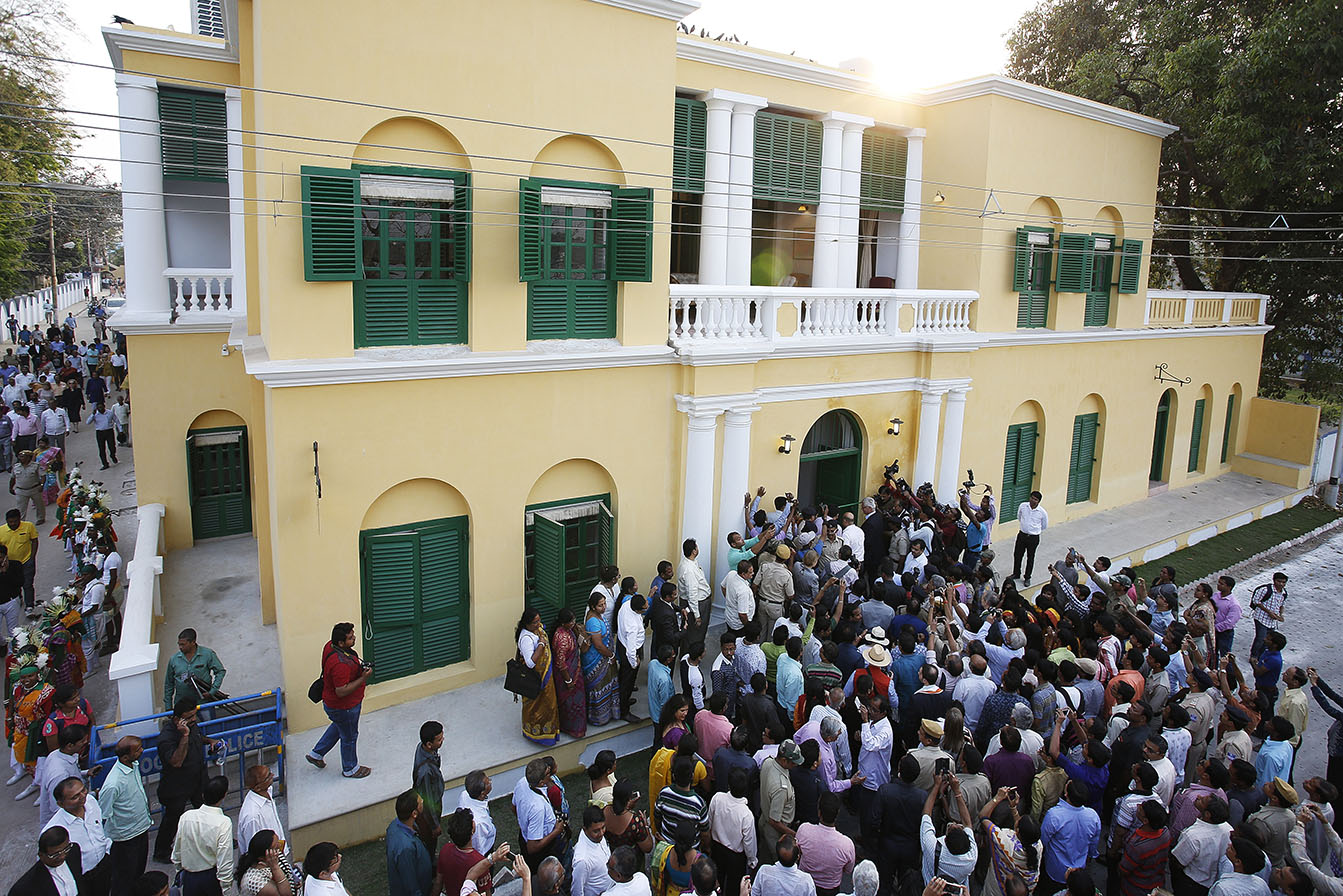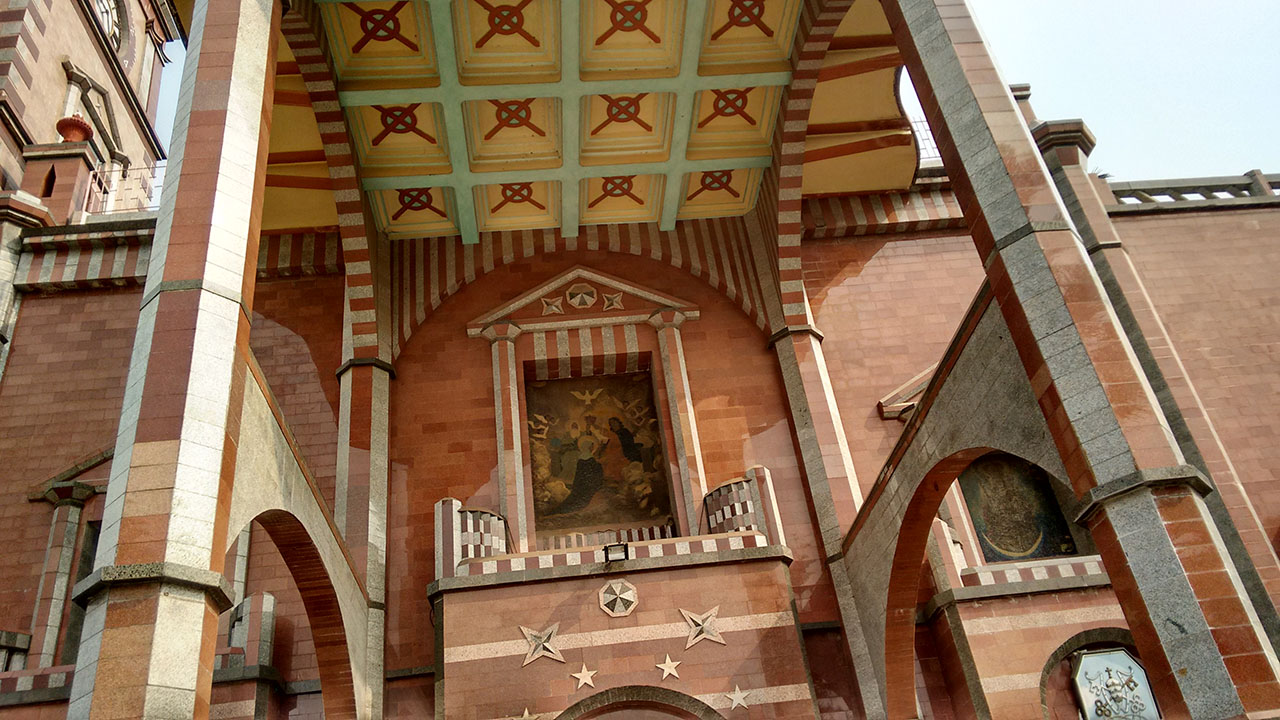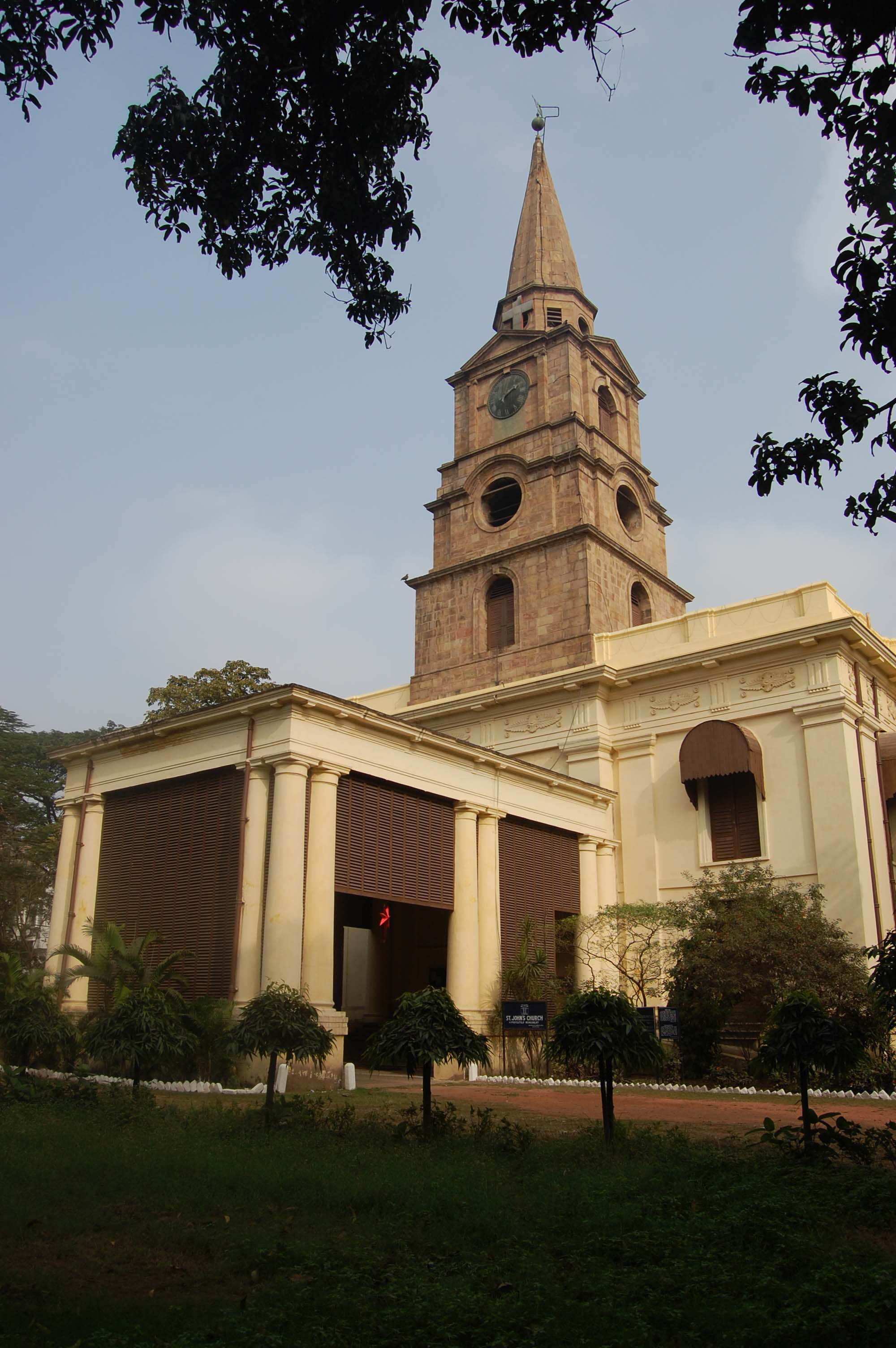The European heritage of West Bengal is the lesser known part of its history, especially the French, Danish and Portuguese influences. The churches, taverns and villas which exist even today, are such an elegant and nostalgic part of India’s legacy. Today there is a rising awareness about this slice of history, with successful attempts at restoring some of these monuments.
CALCUTTA (now Kolkata) was crowned the second city of the British Empire. So naturally the spotlight has always been on the imperial architecture that is a mishmash of Victorian, Gothic and Doric, not excluding other European styles, especially South European. However, before the city was monopolised by the British East India Company, there existed buildings, mainly administrative offices and beautiful churches built by the European settlers, who held trading posts in certain pockets of the state, and elsewhere in the country as well.
Over time, Christian missionaries, who were of European origin and belonged to various Christian orders such as Catholicism, Augustinian (belonging to the Catholic order, thereby Portuguese and Spanish) and Protestantism, established some of the simple and in many cases, ornate churches in undivided Bengal.

It is said five bishops came to the city over a period of time and built a number of churches that still stand today. The Anglican churches have their own history. In fact, if we trace the patterns of colonisation, we find that European traders who took permission from the Mughal rulers to conduct businesses, gradually exerted their territorial rights. Soon they became administrators of the region.They commanded security forces to safeguard their trading interests.
Immigrants from those countries came in droves and married local women. In due course, religious preachers followed, and they set up places of worship, educational institutions and monuments resulting in some grand heritage buildings; churches, forts, public buildings and residences.
Portuguese influences
Right on top were the Portuguese, who sent their boats from Cochin to undivided Bengal to do business from May to October. They landed in Hugli (as it was spelt then), or went to Chittagong (now in Bangladesh). Under Mughal Emperor Shah Jahan in the mid-sixteenth century, the Portuguese fought with the Dutch, who also tried to wrest control of these parts. Losing control from time to time, the Portuguese then resorted to piracy and looted ships because Chittagong was a large port, with Chinsura by the banks of the River Hooghly (as it is now spelt), the smaller one. Today, what we have left of them is the Portuguese Church at Bandel, a major tourist draw among believers and non-believers alike.

Declared as a minor basilica, the Portuguese built this church known as Basilica of the Holy Rosary or Bandel Church in 1599. It is recorded that when the Portuguese established a port here they invoked the protection of the Augustinian friars, then the largest religious congregation based in Goa.
Captain Pedro Tavares obtained the Mughal emperor’s permission to preach his faith, and it is a curious case of sailors who were also preachers, who initially brought in the religion to the region.
An interesting fact is that the original church was destroyed by the Moors in 1632, leading to a new one built in its place in 1660. On the balcony is consecrated the Our Lady of Happy Voyage because of the sailors who prayed here for safe voyage over Bay of Bengal. A ship’s mast was indeed presented to this Church by the captain of a vessel that survived a strong storm over the Bay.
The church is pretty opulent with marble tiles and stained glasses galore. Incidentally, there was also an Armenian Church and a Dutch Church in these parts, today in ruins, but not yet restored, unlike the Armenian Church of Murshidabad. The other strong influence of the Portuguese was in the art of making ‘chana’ or cottage cheese that went on to become the main ingredient of sweetmeats of Bengal. Ironically, Bandel cheese, a locally made cheese with a smoky flavour is available in a town known for its French lineage called Chandernagore or Chandannagore, which is but two stations away from Bandel.
A whiff of France
Chandannagore became a French settlement in 1688 from a trading post set up in 1673. In 1730, Joseph Francois Dupleix was appointed the Governor and maritime trade in jute, indigo, textiles, sugar, among others, greatly flourished. But bloody wars between the English and French (including the Napoleonic Wars), led to its subjugation by the British. It was subsequently returned to the French for governance in 1816, and remained under the political control of the Governor-General of Pondicherry till 1850. Gradually, trade declined and this once beautiful suburban town with beautiful villas and a grand promenade fell in importance. The grand Dupleix residence now converted to Indo French Cultural Institute and Museum, and a very elegant study in white church – Sacred Heart Church set amid beautiful grounds, landscaped with flower beds are testimonies of the French influences.

The restored Anglican churches of Kolkata
ST. JOHN’S CHURCH
St. John, the original parish church of Bengal, became the first Anglican cathedral in the Indian subcontinent when the first Bishop of Calcutta, Thomas Middleton, preached his first sermon there on Christmas Day, 1815. It remained a cathedral until the consecration of St. Paul’s Cathedral in 1847. St. John’s was the most eligible candidate to take up the role of the East India Company’s leading church in its leading city in India. Sir Evan Cotton, author of Calcutta Old and New (1907), wrote, ‘There are few public buildings in Calcutta richer in their memories of bygone days than the old church of St John’. It was built on the site of the old burial ground, which originally belonged to the Maharaja Nabakrishna Deb, who gifted the land for the construction of the church. Sandstone from Chunar was brought for the steeple and blue marble from the ruins of Gaur, the first capital of Bengal, for the flooring.

ST. PAUL’S CATHEDRAL
St. Paul’s which shares a visual axis with the landmark Victoria Memorial building (Sir William Emerson, 1906-1921), was built opposite the Bishop’s Palace on Chowringhee Road. Construction began in 1839, when the foundation stone was laid by Daniel Wilson, Bishop of Calcutta, and it was completed in 1847. With the consecration of St. Paul’s as the first Episcopal Church of the Orient in 1847, it assumed the role of cathedral from St. John’s. The cathedral was designed in the Indo-Gothic style by William Nairn Forbes, a military engineer who was later promoted to Major General, and was also responsible for the design of the old Calcutta Mint, where he held the post of Mint Master. The tall central spire and square tower beneath were inspired by a similar feature at the 12th century cathedral in Canterbury, England. The upper portion of the tower, which originally reached a height of 61m (200ft), was destroyed twice by earthquakes, in 1897 and 1934. Finally, it was rebuilt as a replica of the Bell Harry Tower of Canterbury Cathedral. The nave of the cathedral is large, with beautifully carved wooden pews and chairs, a stained glass window to the west, intricate coloured artwork covering the eastern walls, and two marvellous Florentine frescoes. The cathedral is 75m (247ft) long and 25m (81ft) wide, and is set in huge grounds with several ancient trees. The church is a feast for the eyes, with fine murals vividly recording the life and work of St. Paul.
ST. JAMES CHURCH JORA GIRJA
The recently completed conservation of St. James’ Church took two years of meticulous planning and implementation, and twenty-one consultative meetings with the members of the church. The project has seen the church rescued from a state of decline, carefully conserved and, finally, rededicated in December 2011 by Rev. Bishop Ashoke Biswas nearly 150 years after its consecration by Bishop Cotton on 25 July 1864.
The church had been slipping into decay since 2000 due to a wide range of factors. Parishioners could feel the dampness rising from the floor. The wooden floor at the second level and many of the door and window frames were infested with termites. Although the main mahogany roof was still strong, leaks had developed along the drip channels, leading to water ingress during the monsoon season. The lack of regular maintenance, shortage of funds and inappropriate repair interventions in the past led to the deterioration of the physical fabric of the church. This is when the church authority and the two neighbouring schools, Pratt Memorial School and St. James’ School, decided to conserve the church for posterity under professional guidance. Many restoration professionals and organisations were contacted. Work started in September 2008 with archival research and a study of old drawings and photographs of the church in order to understand its significance. This information, along with a physical survey, was used to produce updated and accurate floor plans, elevations and sections of the church. A detailed study was then undertaken which included documentation, measured drawings, condition survey and assessment of the historic fabric of the church, in order to prepare a detailed estimate and specification for an authentic and appropriate conservation programme.

The great Danes
From Chandannagore to Serampore is 15 kilometres distance. Again located on the banks of River Hooghly, the final lap of the journey of River Ganga from the north to Gangetic plains, Serampore is a small old town rich in history. It was here that William Carey, the Baptist missionary founded the Serampore College and University under Danish rule. In recent history, the vintage block prints on weaves that inspired one of India’s leading fashion designers Ritu Kumar, were made by craftsmen here.
From 1755 to 1845, Serampore was administered by Denmark under the name of Frederiksnagore. The main trade was in fabrics and the Danes established trading posts in parts of Andhra Pradesh and on the Malabar coasts, as well. The flourishing trade attracted merchants and many of them built their European villas along the banks of the river. With money comes a desire to leave behind footprints in grand buildings and churches. St. Olav’s or Olaf Church of Denmark and Norway, was built here almost 200 years ago.
As part of the “Serampore Initiative” – launched by the National Museum of Denmark (NMD) in 2008, the restoration of the Lutheran Protestant Church which was in ruins, began in 2015, and was completed in 2016. The church is known for its bell tower clock and is consecrated to Christian VII, the then King of Denmark. “St Olav’s can serve as a model for conservation projects,” said Manish Chakraborti, who has helped with the conservation of Dutch heritages along with Anglican churches in the city.
Naturally, restoration is very hard work because one has to create something new out of the ruins, with often the original materials not available any more. What got the conservationists excited recently was the restoration of a quaint tavern that prospered on the very banks of the river. During the 19th century, it is believed that Serampore’s grandeur was even more than Chandannagore. Well-heeled residents built villas on the river banks, and the town attracted tourists who stayed at the tavern. It was in 1786 that a British gentleman opened ‘The Denmark Tavern and Hotel”. From an advertisement in Calcutta Gazette in 1786: “Gentlemen passing up and down the river maybe accommodated with breakfast, dinner, supper and lodging, and may depend on the charges being very reasonable….also liquors sold by the single dozen, for ready cash. A good billiard table and coffee room with the newspapers etc.”
A specialised team of craftsmen from Murshidabad, Sunderbans, Serampore and other parts of Bengal using traditional materials and old craft techniques in masonry helped in the restoration,” according to Chakraborti. “The carpenters have carefully restored the old doors and windows and hand crafted the wooden staircase in Indian teakwood to replace the original one which had collapsed,” he added. Reopened to the public with much fanfare, The Park group of Hotels is expected to run a Riverside Heritage Cafe and Lodge under the West Bengal Tourism Development Corporation, on what was the erstwhile tavern.
Bengal has had a rich history of colonisers from almost all major European nations, who have had a stab at setting up trading interest. In Chinsura, there was a Dutch Fort.
Finally, all other European East Indian companies folded as they were edged out by the British who ruled the waves right through the 16th century to the 19th century. And with the Battle of Plassey in 1757, India came strongly under English rule, and whatever influences that the Portuguese, Danish, Dutch and French had, were laundered out gradually. Today these remain in various small pockets of the state. Even within the rest of the country, the influences, except for the Portuguese in Goa and the French in Pondicherry, are not so widespread, but extremely grand nevertheless. Fallen in disrepair and long considered ruins, several of these heritage structures, mainly churches, forts and old buildings are being conserved with local architects, with governments in these countries providing the aid. History, no matter how bitter or tragic can never be ignored. These churches and monuments whisper of a past – a life gone by – and it is often left to our imagination to reconstruct those days. But with such wonderful conservation projects, the past is coming alive once more.


 [/column]
[/column]